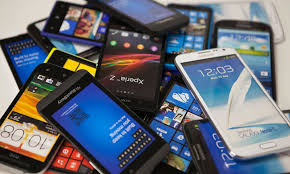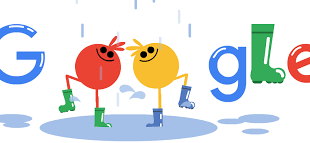So we’ve gone off voice calls yet spend hours glued to our phones. But it’s simply that the rules of conversation have been redrawn in the age of WhatsApp, Snapchat and emojis
News of the un-newsy kind this week, fresh from an Ofcom study designed to confirm a belief in our worst selves: we are a nation addicted to smartphones but are repelled by the idea of making or taking voice calls.
Is this the death of conversation? Not quite, but it’s certainly more than a blip in the cultural history of communication: in 2017, for the first time, the number of voice calls – remember, those things you did with your actual voice on your actual phone – fell in the UK. Meanwhile, internet addiction keeps growing, presumably because we haven’t quite worked out what to do with all those hours we’re saving on talking.
More than three-quarters (78%) of British adults own a smartphone, and we check them on average every 12 minutes. That adds up to 24 hours a week online via our phones – much of that time swallowed up by modern-style chat on WhatsApp and Facebook Messenger, with some left over for texting. It has taken a toll on talking, sure, but few smartphone users might claim to feel less connected as a result.
Conversation is delightful, but unsaid rules for how and when it happens have been established collectively over the past decade or so. No one – except your mum or someone asking about an accident you were never in – just calls these days. Some people will text to warn of a call; others will hold a conversation by swapping voice notes back and forth. (A youth truth: using the voice memo function on WhatsApp as a sort of dictaphone to “talk in turns” rather than hold “a live conversation” is now a thing.)
Many of us can agree that voicemail, as a concept, is dead: anyone listening to or leaving one has arguably too much time and too little regard for the recipient. Who likes listening to voicemails? The menu, the navigation, the unnecessary news that an energy service provider has been in touch to offer you a different electricity package. (As my phone keeps reminding me, I have 53 of these messages optimistically waiting to be heard.)
I hover near a generation in which long and pointless phone calls to the friends you’d spent all day with was an essential post-school afternoon ritual. Every minute was itemised, every telling-off for the small fortune this was costing, accounted for on the quarterly bill. Later, in my first taste of work as an intern at this paper, I was able to learn how journalists did their jobs because they were talking on the phone and to each other all day. Five years later, I was working at a start-up where real talk was at a minimum: conversations had migrated to the late, great MSN Messenger. Typing your talk officially took over.
Now, the idea of ringing someone for “a chat” has a quaint, retro quality. I can, and will, talk you under the table, but phone calls are a luxury usually reserved for about five people: my mum, my sister, two best friends and my editor, obviously. Even then, I’m rubbish at picking up.
Much is made about smartphones leading to dumber conversation – amid claims that the art of chatter has been lost. Arguably, however, conversation has simply been rebooted and reconfigured. Take the myriad ways in which we can and do communicate now. It’s a given that I will spend an embarrassing portion of my day glued to a screen (it’s work!) and much of that will be chatting (again, it’s work!).
Unlike most people I know, I don’t use WhatsApp for one-on-one conversations (the “two blue ticks” confirming that someone has opened and read your message allows for too much anxiety) but I think it’s the best way to conduct group chats: the family thread, your best friends, the meme crew, and the splinter cells set up around someone’s birthday drinks. It’s here that modern comms can be richer, and smooth out awkward conversational lags and silences: the speed of a group chat, the ability to send pictures, links, songs, videos and emojis – emojis! – shouldn’t be sniffed at.
My parents aren’t texters and my cousins in Pakistan prefer to write in phonetic Urdu; I maintain that the emoji is the most universal and democratic form of communication. No, a winky smiley face love heart kiss unicorn fish can’t replace a meaningful conversation with my dad about my bathroom pipes, but a bit of daily WhatsApp contact – a Good Morning! meme from him, 43 emojis from my niece – keeps us connected when time and life don’t allow for a Big Catchup Call.
There’s more: texting, for proper, considered, well-punctuated missives; iMessage for barely legible babble on my iPhone; GChat on Gmail for day-long office inanity; Facebook for lurking on other people’s conversations; Twitter for lurking on other people’s opinions, and Snapchat for pretending I’m in a demographic attractive to advertisers.
Talk isn’t dead. It’s just presented in ways that are to the point, quicker and easier to articulate. What we lose in tone we make up for in emoji.
The Guardian
 Lebanese Ministry of Information
Lebanese Ministry of Information



